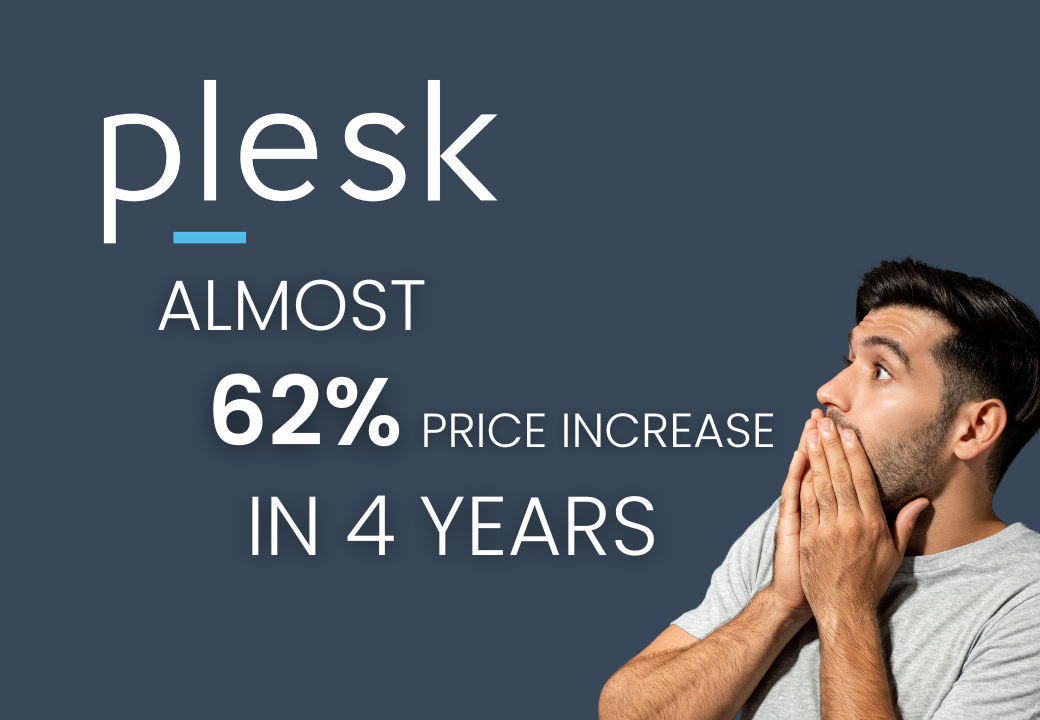The costs of tools for running web hosting have been increasing year by year. Recently, I wrote about the hosting control panel, cPanel, which has seen a price jump of 50% in recent years. Today, I want to discuss another popular panel that is a sibling rival of cPanel – Plesk Panel. While the price increases for Plesk Panel were much less dynamic than those of cPanel, they still managed to rise much more by almost 62% over the years.
Compared to cPanel, Plesk Panel offers a much more complex pricing policy. During our analysis, we focused on the general American price lists. Plesk also has an individual pricing scheme, which we decided to omit due to its specific nature. Instead, we concentrated on analyzing and reviewing the prices of monthly and annual subscriptions aimed at VPS servers and dedicated servers. These versions are most often chosen by individuals, small agencies, smaller resellers, and startup hosting companies that do not yet have the volume of clients to receive significant discounts.
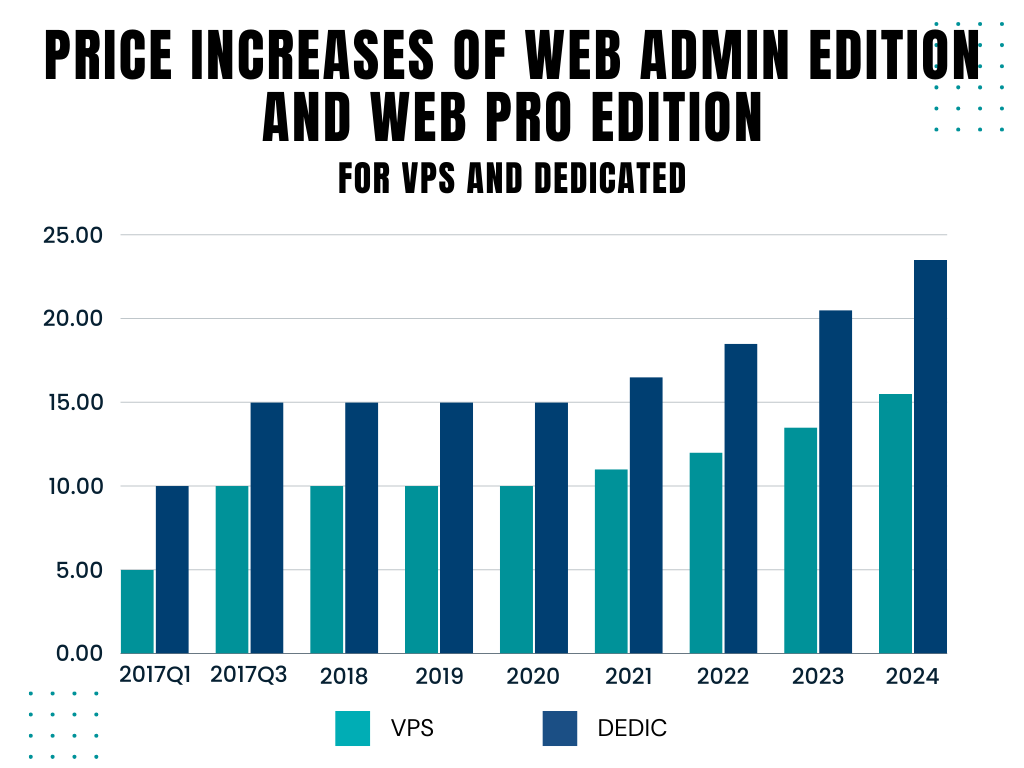
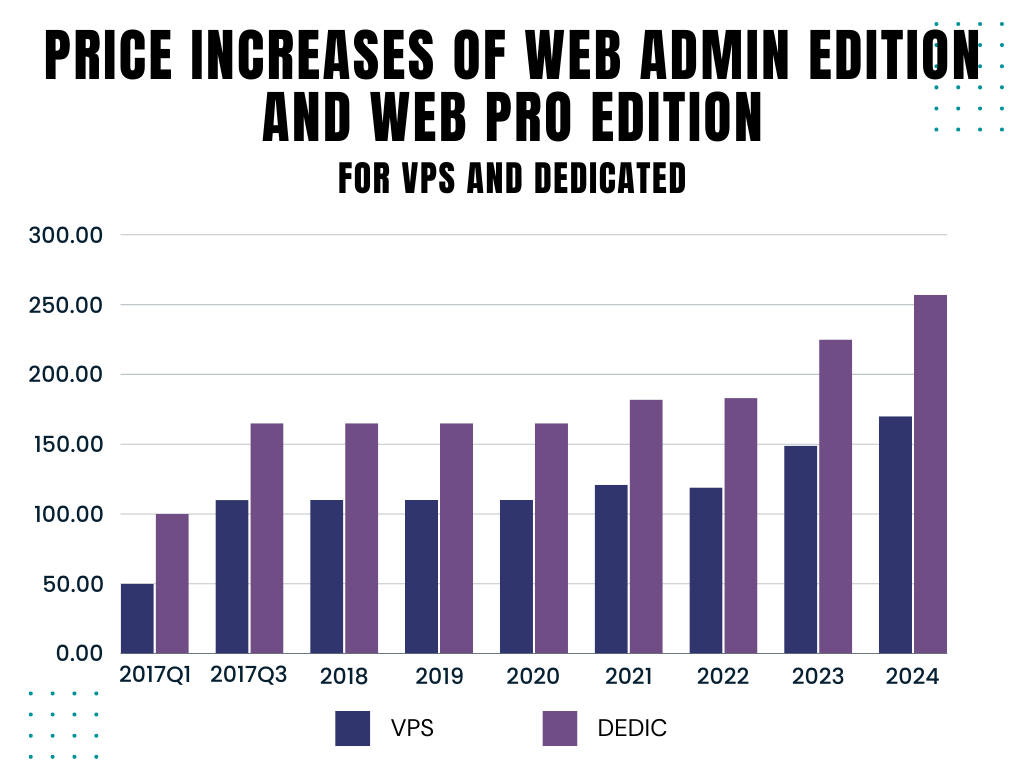
So here we go — years 2017-2020
We begin our analysis with the years 2017 to 2020. During this period, for both VPS and dedicated server services, there was only one price increase noted between the first and second half of 2017. The subsequent years were characterized by stagnation, during which the price list remained stable at the same level — aside from occasional promotions.
For VPS server offerings, the price of the Web Admin Edition package changed from $5.00 to $10.00, while for dedicated servers, the same change was observed for the Web Admin Edition package, as well as a price change for the Web Host Edition from $35.00 to $45.00.
These changes accustomed Plesk Panel users to competitive pricing relative to the package capabilities. During the same period, cPanel recorded annual price increases.
Price Trends: 2020-2024
During the period from 2020 to 2024, we observed notable changes in the pricing of packages for both VPS and dedicated servers. This analysis separates monthly and annual billing cycles, providing insights into the incremental growth of each package’s cost.
VPS and Dedicated Servers (Web Admin and Web Pro Editions)
For both VPS and dedicated server environments, the Web Admin Edition and Web Pro Edition packages maintained identical pricing structures. This uniformity simplifies the analysis for these two categories.
The Web Admin Edition package in the monthly billing at the beginning of 2020 cost $10.00, whereas now its price is $15.50. This is an increase of 55.00%,. In the case of annual billing, the price surged from $110.04 to $169.56, which represents a growth of 54.07%.
The Web Pro Edition package follows a similar trend as in the monthly billing, it cost $15.00 at the start of 2020, whereas now its price is $23.50. This is an increase of 56%. In the case of annual billing, the price escalated from $165.00 to $257.04, which represents a growth of 55.78%.
Web Host Edition
The Web Host Edition for dedicated servers displayed a more significant price adjustment, especially when compared to its VPS counterpart. The highest available Web Host package, primarily aimed at large companies, also saw changes over the years 2020 – 2024. The increases are indeed spectacular:
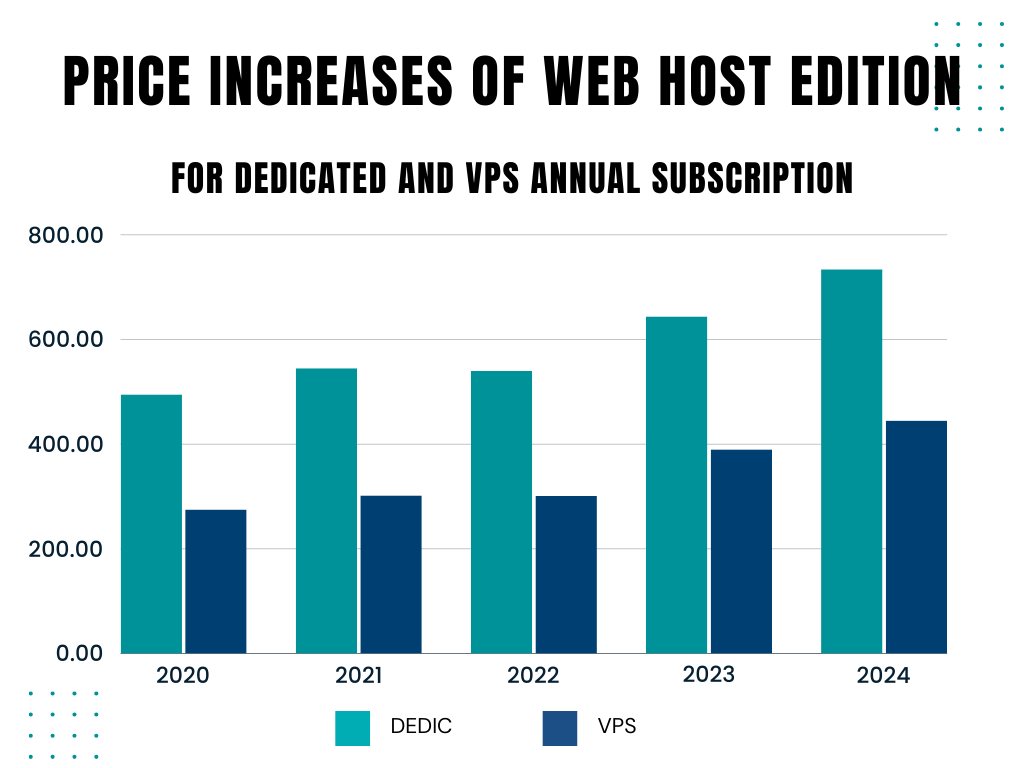
In the case of dedicated servers and monthly billing, there is an increase from $45.00 to $67.00, amounting to 48.89%. Annual billing shows increases from $495.00 to $733.56, yielding a total of 48.19%.
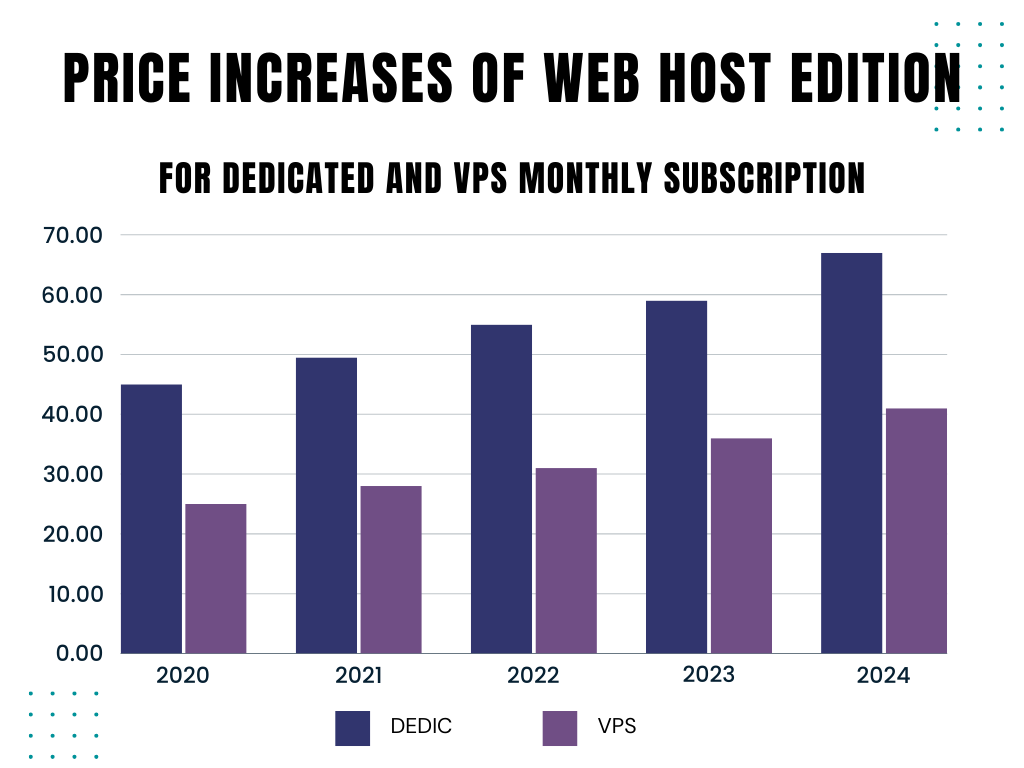
VPS servers were not spared either, as monthly billing jumped from $25.00 to $45.50, representing a 62% price increase, and annual billing from $275.04 is now $445.56, which is an increase of 62%.


These adjustments not only illustrate the evolving pricing landscape within the web hosting industry but also reflect a strategic adaptation to market demands and operational costs. Interestingly, the price increments for the first two packages are consistent across VPS and dedicated server platforms, indicating a streamlined pricing strategy for these services. The significant uptick in the Web Host Edition’s cost for dedicated servers underscores the premium placed on high-capacity hosting solutions.
Where do such changes come from?
The recent price increases observed in the Plesk Panel offerings can be attributed to several factors, reflecting broader trends in the web hosting industry as well as specific strategic decisions by Webpros, the company behind Plesk. Here’s a breakdown of the potential reasons behind these pricing adjustments:
- Market Dynamics and Subscription Growth Limit: Initially, the rapid increase in prices may have been a response to hitting a growth ceiling in new subscriptions. As the influx of new customers begins to stabilize, the momentum for dramatic price hikes diminishes. This stabilization suggests that earlier price escalations were partly aimed at managing the pace of new user acquisition and aligning service capabilities with demand.
- Competition and Premium Positioning: The emergence of competitive solutions in the market can also drive price changes. By increasing the cost of its packages, Plesk may be positioning itself as a premium offering within the enterprise sector. This strategy implies that higher prices are justified by the advanced features and reliability that Plesk provides, distinguishing it from other solutions and appealing to businesses looking for top-tier hosting services.
- Continuous Software Development: Another significant factor behind the price adjustments is the ongoing development and enhancement of the Plesk software. Regular updates introduce new functionalities, such as an integrated website builder and a sophisticated WordPress management tool, which are particularly valued by interactive agencies. These enhancements contribute to the platform’s overall value proposition, justifying the higher costs associated with accessing the latest and most advanced features.
It should also be borne in mind that determining the exact reasons for the price changes is challenging, as Webpros does not publicly release detailed sales or financial reports related to Plesk. Therefore, any analysis of the pricing trends and their underlying causes must be speculative, based on opinions and information from various sources within the industry. This lack of transparency makes it difficult to pinpoint the precise drivers of price adjustments, leaving room for interpretation based on observed market behavior and product evolution.
In conclusion, while the specific reasons behind Plesk’s pricing strategy may be complex and multifaceted, it’s clear that a combination of market positioning, product development, and industry dynamics plays a role in shaping these decisions. As the web hosting landscape continues to evolve, Plesk’s approach to pricing will likely reflect both its response to competitive pressures and its commitment to offering a high-quality, premium service to its enterprise-level customers.
Kamil Kołosowski
Author of this post.
